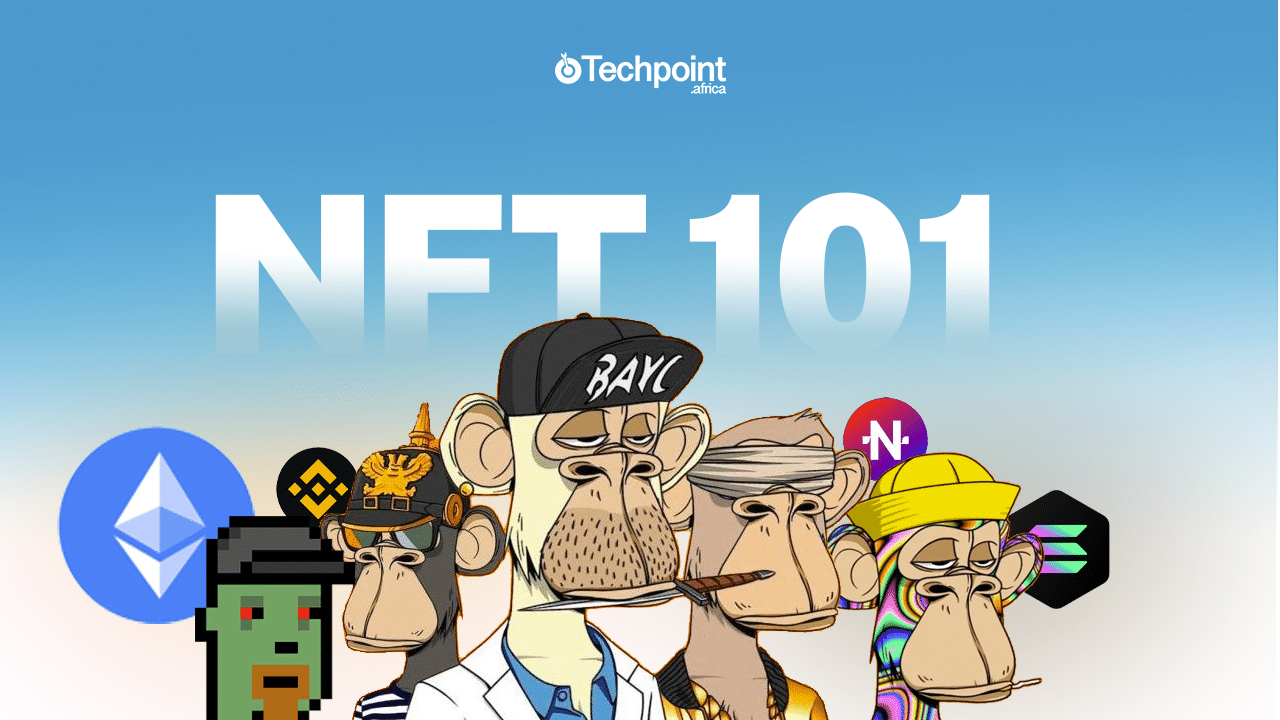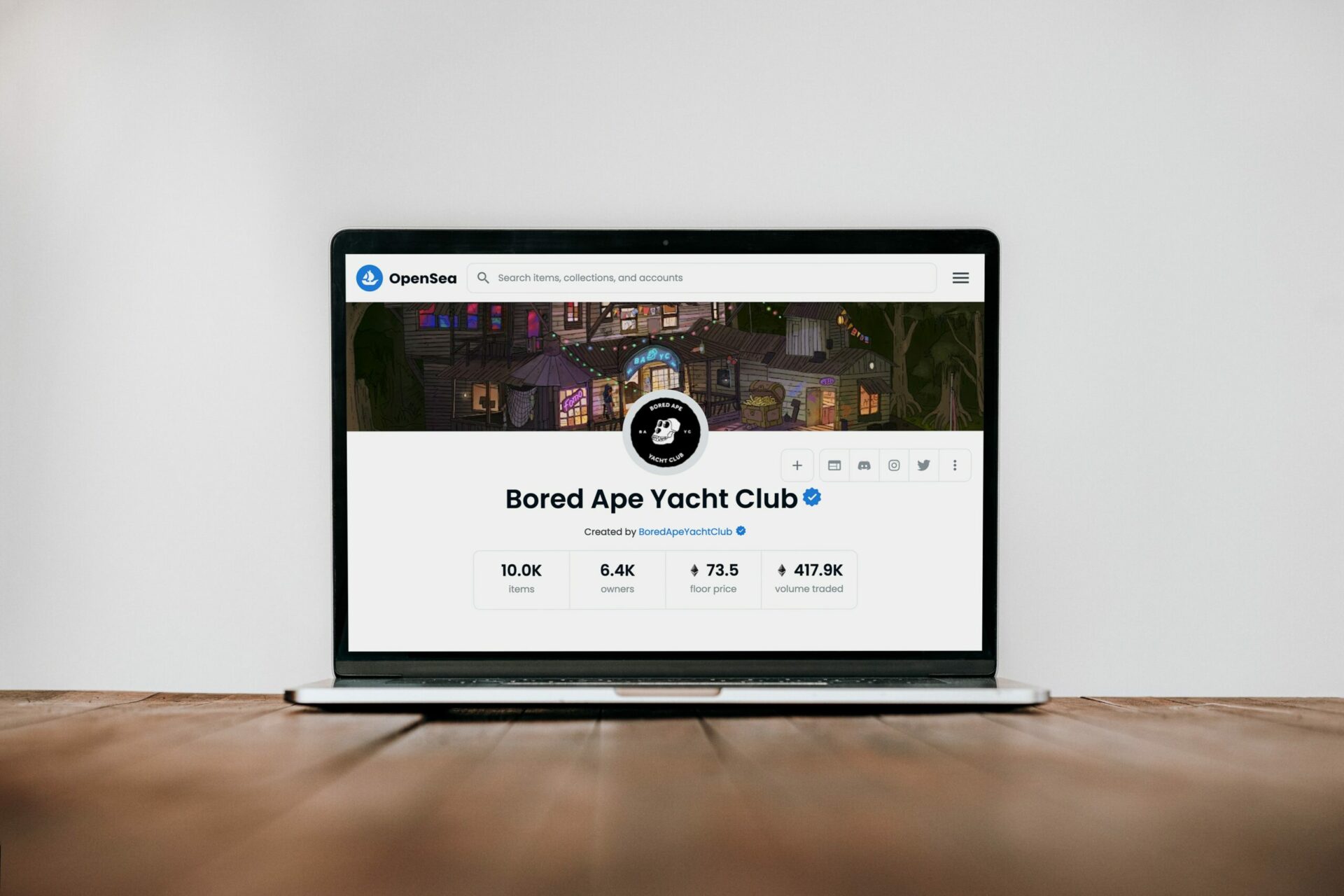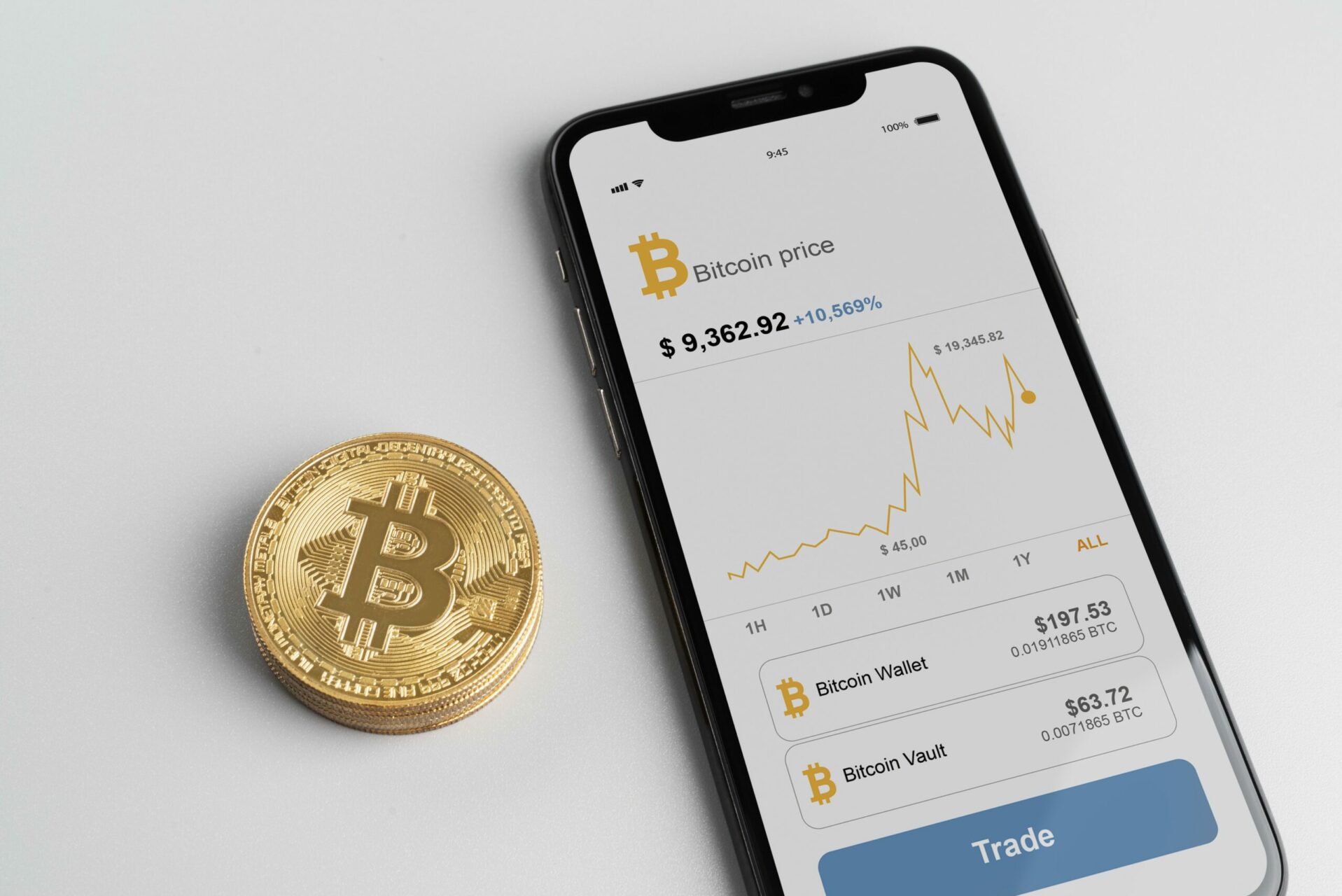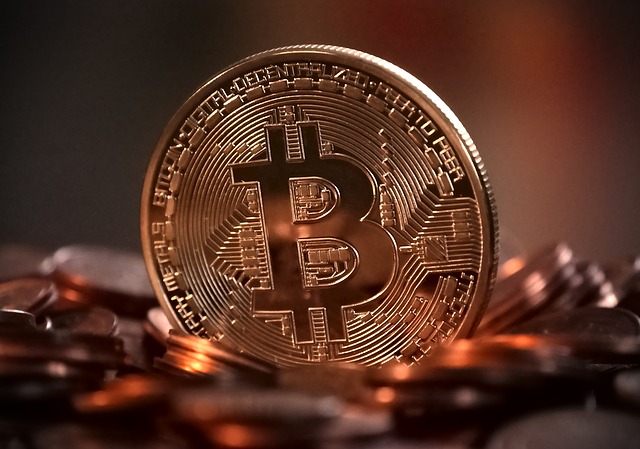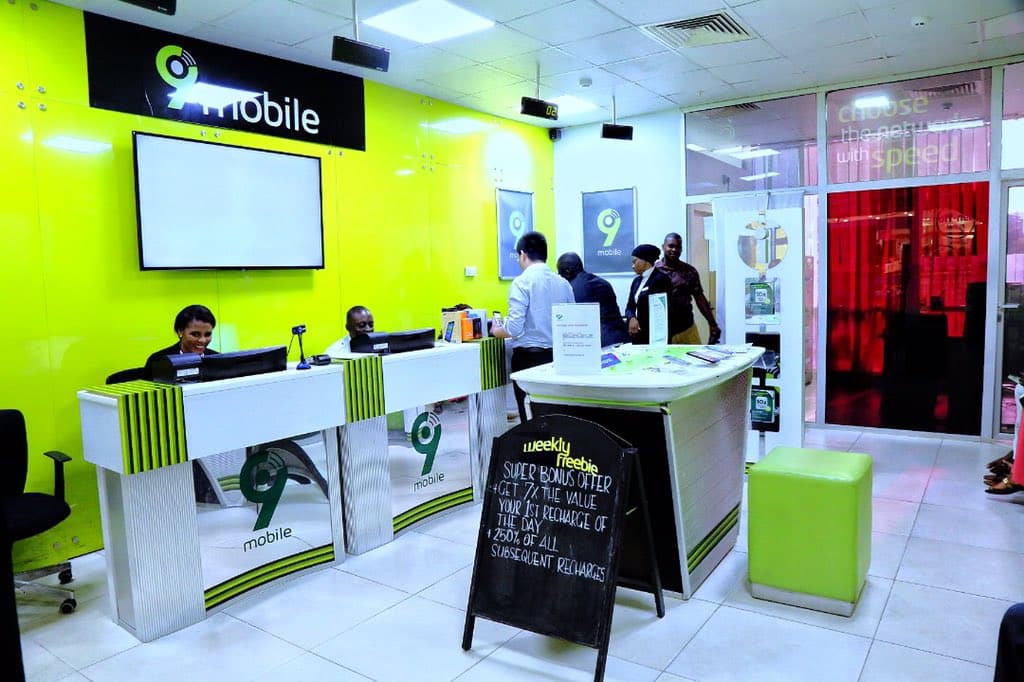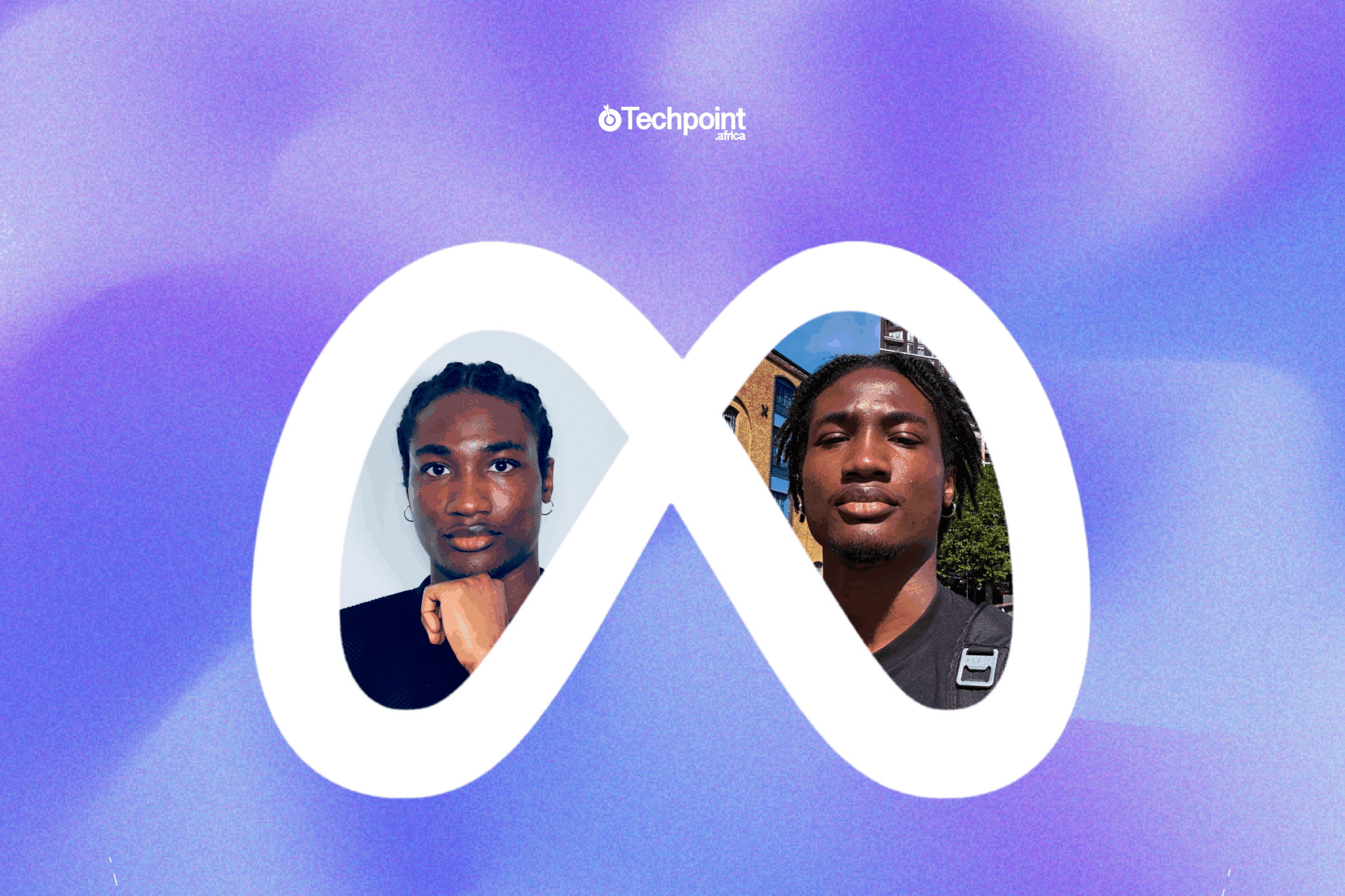Art is evolving. Before now, art could only depict meaning in the real world — an image of a known person or a familiar sunset over a known hill. The idea of drawing, moulding or sculpting something that didn’t or had never existed before was inconceivable.
By 1915, Kazimir Malevich, a Russian artist, proved art could be anything through his painting — a black square. With Malevich’s work, art transcended from being a form of representation to a form of expression.
Presently, evolution has brought art to an age where it is intangible yet valuable.
An idea of what NFTs are
Inherently, non-fungible tokens (NFTs) are digital art that have been given a unique identity on the blockchain. See them as a digital certificate that shows the original owner of something even though there are several copies of that same thing.
They’re called non-fungible because, unlike fungible tokens, they’re unique and cannot be replicated.
A fungible token, for instance, is Bitcoin (BTC). That’s because one BTC in my wallet is the same as one BTC in someone else’s wallet, and if we exchange it, we still have the same thing.
But, if we own Anthony Azekwoh’s Red Man NFT and someone else owns an NFT by another artist, we will have completely different things if we exchange it. Hence, non-fungible.
Interestingly, NFTs could be anything; art, picture, video, or music.
NFTs got popular with the birth of CryptoKitties — digital cats — which sold for as much as $110,707 in December 2017. However, the first-ever NFT is known as Quantum, minted on the Ethereum network in 2014.
NFTs are stored on the blockchain like other cryptocurrencies but with a different token standard that contains additional information.
In straightforward terms, a token standard contains a set of information that tells which blockchain network a token belongs to. For example, on the Ethereum blockchain, the common token standard for a fungible token is ERC-20, while for NFTs, it is ERC-721.
However, knowing all that technical jargon isn’t so important in creating and selling your own NFT. By now, it is clear that apart from a platform to display creativity; it is also a money-making stream. Beautiful times, we must say.
The age of non-fungible tokens (NFTs)
It’s the age where Anthony Azekwoh, a 21-year old NFT artist, is making a fortune from creating digital art such as his famous Red Man or historical Black Samurai.
This new dispensation presents an opportunity for people to showcase their artistic expressions and get appreciated immediately.
With over $10 billion exchanging hands in the NFT market this year alone, the era of digital art is starting to become one many do not want to miss out on.
However, like most blockchain innovations, getting into NFTs can be complicated for newbies in the blockchain universe.
Getting into NFTs isn’t so complicated. All that’s needed is to have the necessary tools to build your experience in the field.
Let us walk you through the process
Set up a crypto wallet
Generally, to buy or sell something online, you need a bank account to send money from or for buyers to pay into. The same applies to the blockchain space. The only difference is, instead of money (fiat), crypto is the means of exchange.
A crypto wallet is a portal into the blockchain space. From buying and selling crypto to minting NFTs, it all starts with a wallet.
However, there are different kinds of wallets for various purposes. With some, you can store your cryptocurrencies just the way you keep money in your bank account.
But there are others that not only store but help you interact with blockchain-based platforms. These are the wallets used for NFTs.
Some of the most popular are Metamask and Rainbow — Ethereum-based wallets that help you interact with protocols built on the Ethereum network.
Side note: Ethereum, the network is different from Ethereum (ETH), the cryptocurrency.
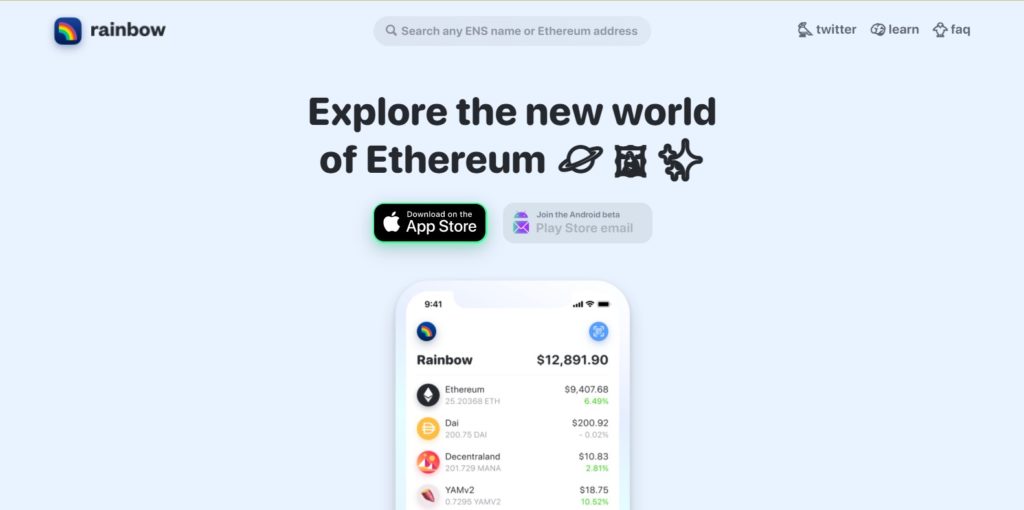
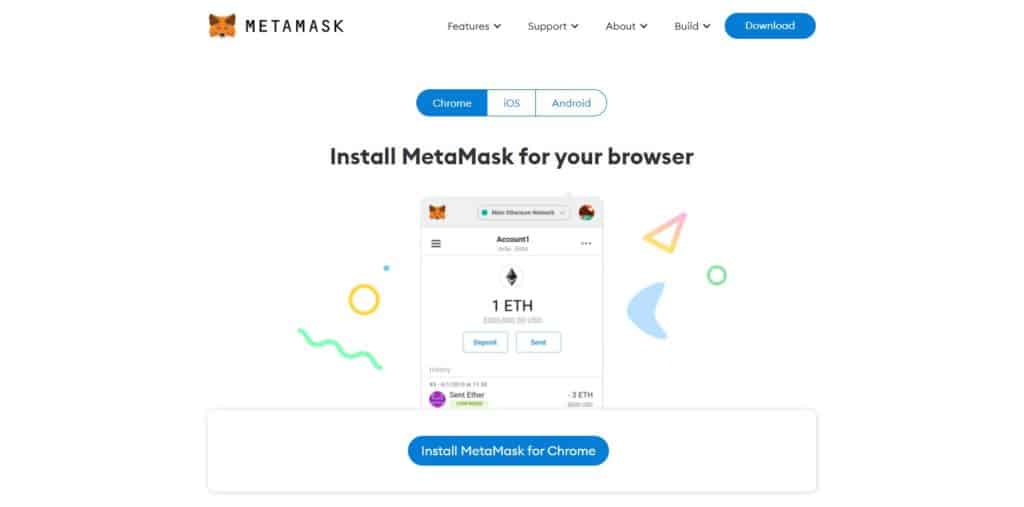
While there are other blockchain networks — including Polygon and Solana — that support NFT transactions, Ethereum is still the most popular.
Setting up a Metamask wallet
Metamask is available as a browser extension or mobile app — we recommend the browser extension, which works better.
Adding Metamask as a browser extension is no different from adding any other extension, and it is compatible with Chrome, Firefox, Brave, and Edge.
Once added to your browser, you’ll be required to create an eight-character password. What comes after is the most critical part of creating a wallet: the seed phrase — a representation of your private key.
A private key is made up of a string of letters and numbers and gives you total control and access to your wallet, which makes it very important. There’s also a public key, and as the name implies, it can be made available to anyone — something like a bank account number.
The private key, on the other hand, should never be disclosed to anyone. Metamask generates your private key in the form of a seed phrase containing 12 words, and these words are to be written down and stored securely.
If you lose your private key, that wallet is lost forever, and not even Metamask can recover it. Essentially, it’s a bank account, but the bank has no control over it.
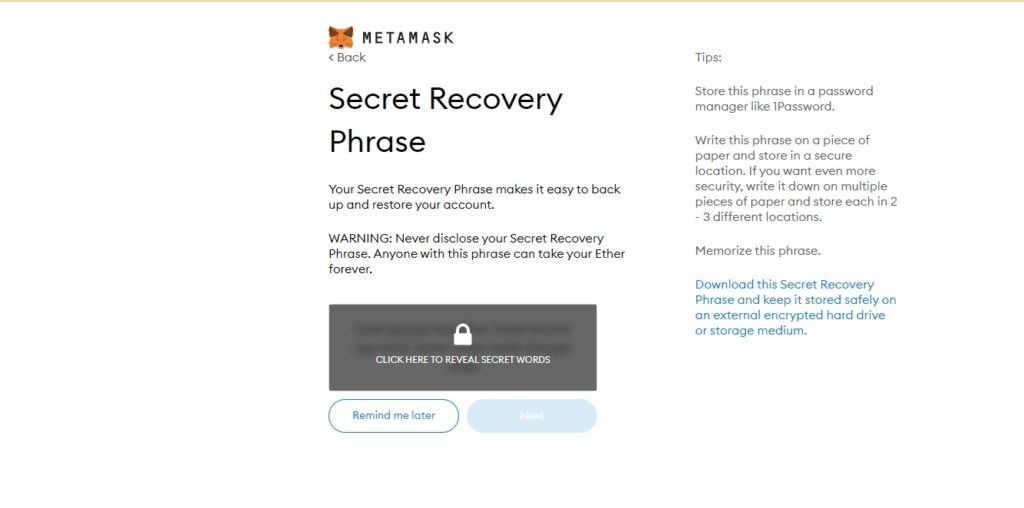
Once you’ve stored your seed phrase securely, it’s time to fund your wallet. While Metamask allows you to buy ETH directly, buying from a crypto exchange and sending it to your wallet seems like an easier route.
Connect your wallet to an NFT marketplace
OpenSea, Rarible, SuperRare and Solanart are some well-known NFT marketplaces, and they support different wallets. Once you’re in the marketplace, you’ll be prompted on which wallet is supported and how to connect it.
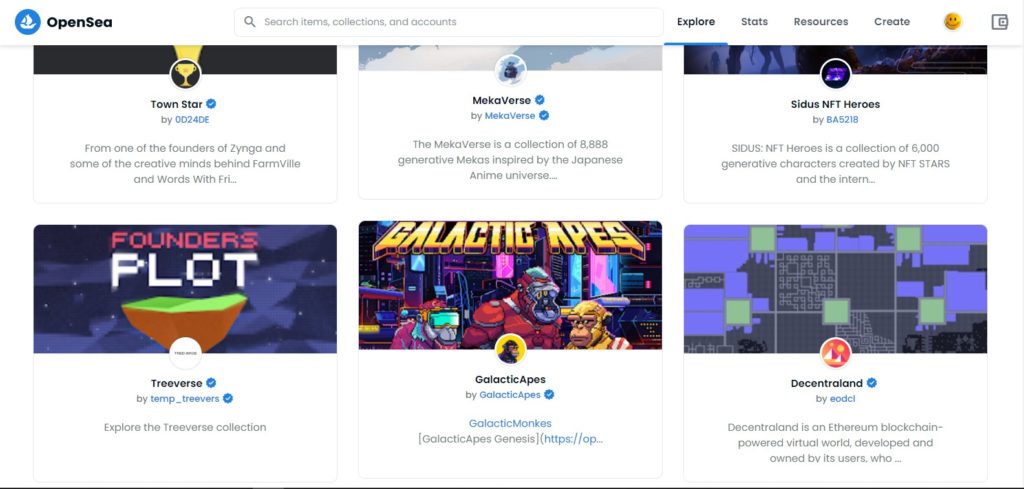
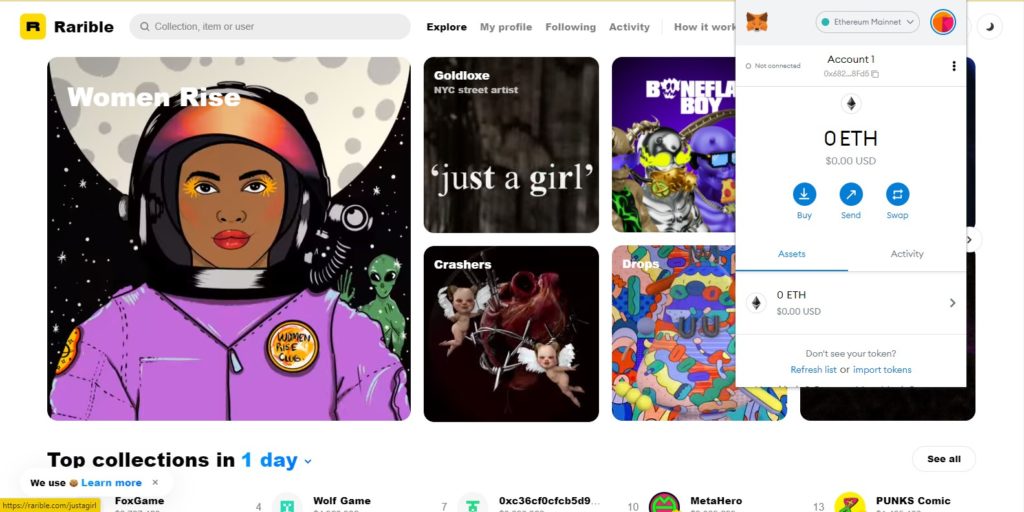
For OpenSea, simply tap on your Metamask extension, click the connect button on the top right corner, and you’re in.
With a funded wallet, you can proceed to buy or mint NFTs.
How to mint NFTs
If you happen to have recorded a song, scribbled something on a canvas, or taken a cute picture of your dog and you think it will make for a good NFT, all you have to do is mint it on a marketplace.
Minting simply means turning something into an NFT and putting it up for sale in a marketplace.
The first step is choosing a preferred marketplace. Rarible has been touted as a good platform for beginners, and minting an NFT on it is as simple as uploading a WhatsApp status.
Once you connect Rarible to your Metamask, click on the create button and your File Manager opens up. Click on the file you want to mint, and you’ll see it appear in the create box.
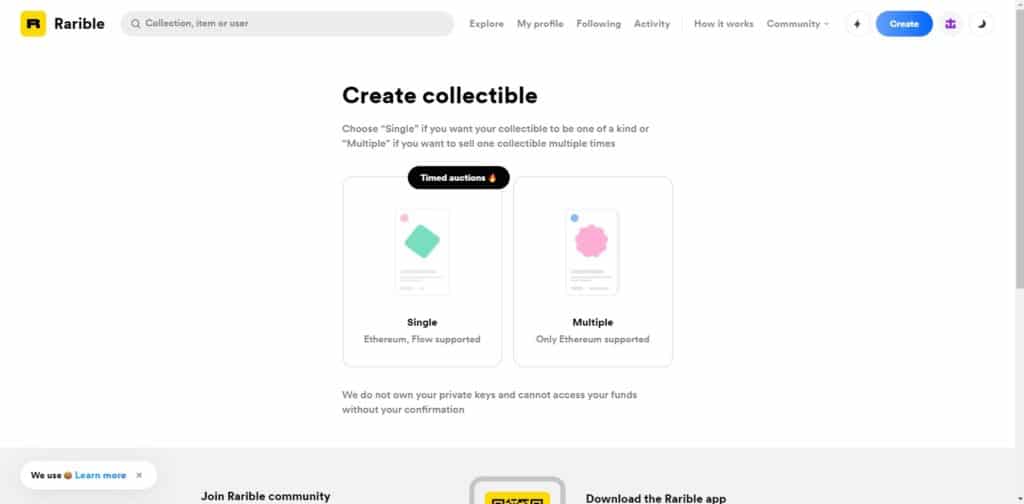
Beneath the box, you’ll provide other information about your NFT, like price and royalties. You’re free to choose whatever price you want; if you feel your NFT is worth $1 million, then go for it. There’s also an option to get people to bid on it.
Whenever anyone resells your NFT, you get a percentage called royalty. For example, if you sell your NFT for $1 million and the buyer resells for $2 million, you can request a 50% royalty on that sale.
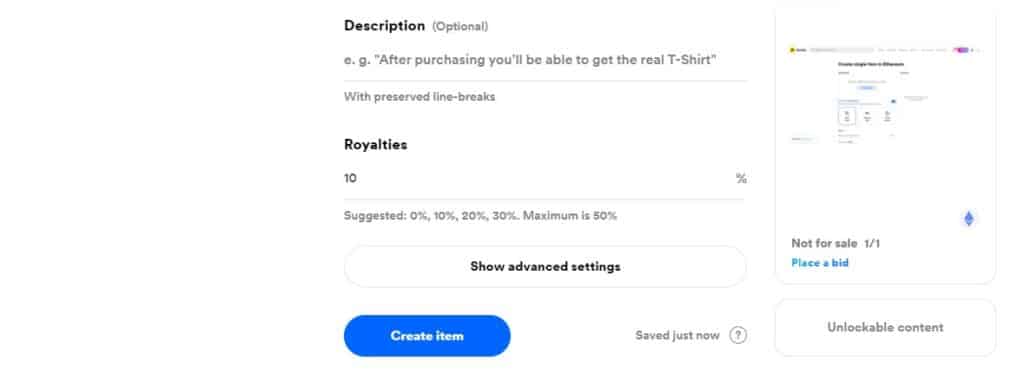
Interestingly, getting your royalty is automated with something called smart contracts. See them as standard contracts but written in code instead of words.
Once predetermined conditions are met, it springs into action. With a regular contract, a party might be expected to pay an amount of money once a deal is done, but there’s a possibility things could go south. This could lead to court cases, lawyers, and a tonne of stress.
If it were a smart contract, however, the money is paid whether the other party wants to or not. So, the smart contract automatically sends you your cut once your NFT is resold.
After inputting your royalty percentage, the name of your NFT, and other required information, you can list it for sale and hope someone thinks it’s worth a million dollars.
Legal considerations for NFTs
Currently, the crypto and blockchain space have no defined regulations, and the same applies to NFTs.
However, existing laws still apply. For example, tokenising an image subject to copyright as yours could have legal consequences.
Also, while an NFT might change ownership, the copyright doesn’t. The artist continues to have the copyright though the work could change hands several times.
There are also important unaddressed regulatory posers like the question of NFTs being a security.
While proper regulation in the space could make things less simple, it will protect artists even more.
Beware of gas fees
Transactions on the Ethereum network require gas fees which vary depending on several factors, including transaction size.
Gas refers to the unit that measures the computational effort required to execute specific operations on the Ethereum network.
The technicalities behind gas fees are very complex. However, it is important to take gas fees into account when performing transactions on Ethereum.
For example, minting an NFT on Ethereum can cost as much as $100 in gas fees. While other networks such as Binance Smart Chain and Solana are cheaper, they are not as well established as Ethereum.
It’s all about community
Making bank on NFTs is more than having an excellent painting or a lovely song. While these might help your sales, the most critical part of NFT projects is community building.
According to Mark Savage, a creative storyteller who has been in the NFT space since 2017, “If you want to tell a new and unique story, you will still have to connect with an audience.”
In the coming months, we’ll be looking at the tips and tricks of NFT trading through the lens of some of the best traders on the planet.

